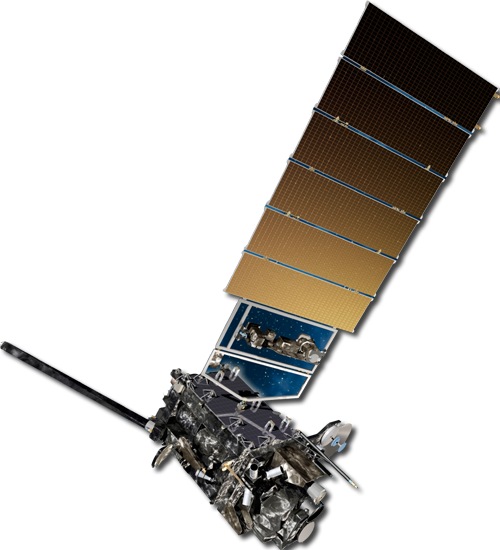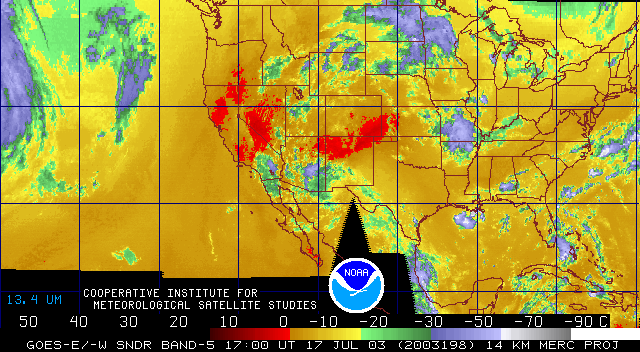Monitoring the Global Environment

Detecting Trace Gases in the Atmosphere
The three main trace gases, carbon dioxide (CO2), methane (CH4)
and nitrous oxide (NO2), are also known as greenhouse gases. Greenhouse
gases are mostly "transparent" to incoming solar radiation; that
is, they rarely interact with sunlight. However, these gases are very efficient at
trapping heat radiated from the Earth's surface by absorbing and re-emitting it (the
Greenhouse effect) which makes them prime candidates for study by IR radiometers and
vertical sounders flown on weather satellites.
Water vapor is the most abundant greenhouse gas and the main reason our atmosphere
is warm enough to support life. Of the other three main greenhouse gases, carbon dioxide
is the most abundant. However, nitrous oxide is 270 times more capable of absorbing
heat than carbon dioxide and methane is 21 times more efficient at this process, which
is why all three are being monitored closely by scientists via satellite technology
and other research tools.
Below are two images derived from satellite sounders, the first depicts
carbon dioxide in the upper atmosphere and the second image illustrates an ozone feature
in the Great Lakes Region during July 2003.

GOES Sounder sensing CO2 in the upper troposphere (shortwave absorbtion region)

Total Ozone (O3) computed from the GOES-12 satellite sounder resolved this ozone feature (outlined in green)
| 5/ 15 |





